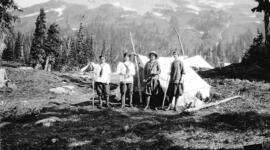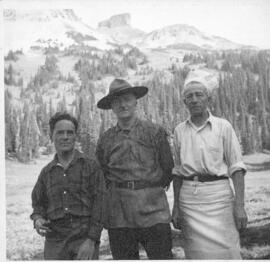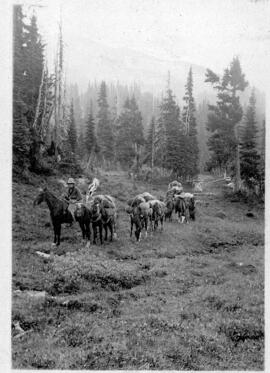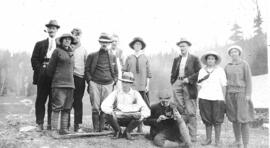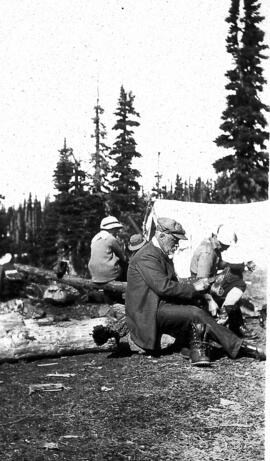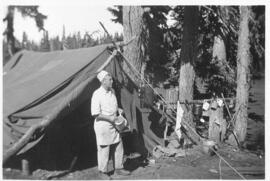Described only as "camp" in 1914, it is likely to be one of the BC Mountaineering Club summer expeditions to the Garibaldi area. With the rope and their ice axes, these women look set for a day's trek, maybe across a glacier.
Charles ChapmanElements area
Taxonomy
Code
Scope note(s)
- One of the largest and most accessed parks in southern British Columbia. Accessible year-round, Garibaldi parks contains everything from simple hill walks to advanced mountaineering.

